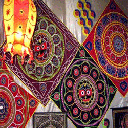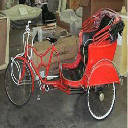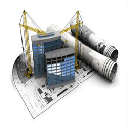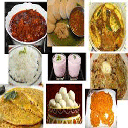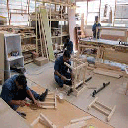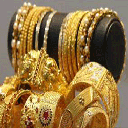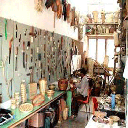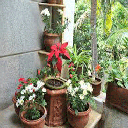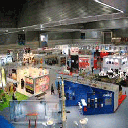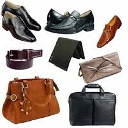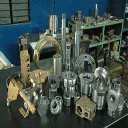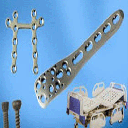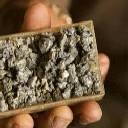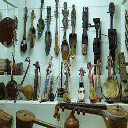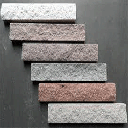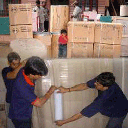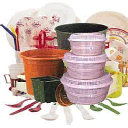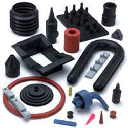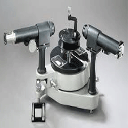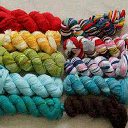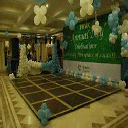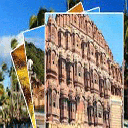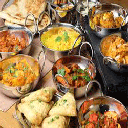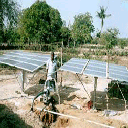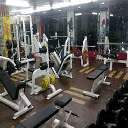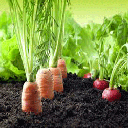Madhya Pradesh ("Central Province"; abbreviated MP), often called the Heart of India, is a state in central India. Its capital is Bhopal. Indore is the largest city & largest urban agglomeration in the state . Madhya Pradesh is the 2nd largest state by area and 6th largest state by population. It borders the states Uttar Pradesh, Chhattisgarh, Maharashtra, Gujarat and Rajasthan. This is the second largest state in terms of area and is thickly covered by forests which account for one third of the state’s geographical area. The state is filled with all types of geographical structures including hills, plains, plateaus, rivers and forests. The climate of Madhya Pradesh is characterized by a monsoon weather pattern. There are three distinct seasons - summer (March to May), winter (November to February), and the intervening rainy months of the southwest monsoon (June to September). Madhya Pradesh experiences extreme temperatures both during summer and winter. In summer, the temperature goes up to 42 degree Celsius and in winters it falls tremendously down. From March the temperature starts rising and from October the temperature starts falling. The temperature also varies from place to place in the state. The hottest place is Gwalior in summer where temperature reaches up to 42 degree Celsius while in Bhopal the temperature is close to 40 degree Celsius. The average temperature in winter hovers around 10 degree Celsius. Madhya Pradesh receives maximum rainfall from June to September. The average rainfall varies from 112cm in eastern Madhya Pradesh to 50-62.5cm in northern and western Madhya Pradesh. Based on its climate, Madhya Pradesh can be divided into six regions namely: The Northern Plains The Narmada Valley The plains of Chhattisgarh (Chhattisgarh is now a separate state) The Hilly Region of the Vindhyas The Malwa Plateau The mountainous region of Bastar Rivers: Madhya Pradesh has numerous rivers, the important ones being Narmada, Chambal, Betwa, Shipra, Sone, Mahanadi, Indrawati and Tapti. All these rivers are important for drinking, irrigation and hydro-electric power generation. Forests: Madhya Pradesh is gifted with rich and diverse forest resources. About one third of the total geographical area is under forest cover. This forest cover has been classified as Reserved Forest, Protected Forest and Unclassified Forest. Central, eastern and southern parts of the state are rich, whereas northern and western parts are deficient in forest reserves. Variability in climatic and soil conditions brings about significant difference in the forest types of the state. There are four important forest types namely, Tropical Moist, Tropical Dry, Tropical Thorn, and Subtropical broadleaved Hill forests. The forest area can also be classified based on the composition of forest and terrain of the area. Based on composition, there are three important forest formations namely Teak forest, Sal forest and Miscellaneous Forests. Bamboo bearing areas are widely distributed in the state. To prevent pressure on the natural forests, plantations have been undertaken in forest and non forest areas to supplement the availability of fuel wood, small timber, and fodder. Minerals: Madhya Pradesh is endowed with rich mineral resources. The diamond mine at Panna near Khajuraho is the largest mine in the country which has recoverable reserves of about one million carats. The state's other mineral deposits include high-grade limestone, dolomite, iron ore, manganese ore, copper, coal, rock phosphate and bauxite. Madhya Pradesh is country's only producer of tin ore. The predominant language of the region is Hindi. In addition to standard Hindi, several regional variants are spoken, which are considered by some to be dialects of Hindi, and by others to be distinct but related languages. Among these languages are Malvi in Malwa, Nimadi in Nimar, Bundeli in Bundelkhand, and Bagheli in Bagelkhand and the southeast. Each of these languages or dialects has dialects of its own. Other languages include Bhilodi (Bhili), Gondi, Korku, Kalto (Nahali), and Nihali (Nahali), all spoken by tribal groups. Due to rule of Marathas, Marathi is spoken by a substantial number of people. In addition, Saraiki and Pashto are spoken by the large number of immigrants from Afghanistan and North-West Frontier Province, Pakistan Several cities in Madhya Pradesh are extraordinary for their architecture and or scenic beauty. Three sites in Madhya Pradesh have been declared World Heritage Sites by UNESCO: the Khajuraho Group of Monuments (1986) including Devi Jagadambi temple, Buddhist Monuments at Sanchi (1989) and the Rock Shelters of Bhimbetka (2003). Other architecturally significant or scenic sites include Ajaigarh, Amarkantak, Asirgarh, Bandhavgarh, Bawangaja, Bhopal, Chanderi, Chitrakuta, Dhar, Gwalior, Indore, Burhanpur, Maheshwar, Mandleshwar, Mandu, Omkareshwar, Orchha, Pachmarhi, Shivpuri, Sonagiri, Mandla and Ujjain. MP being very large geographically, and the history being spread over several millennia, developing a comprehensive picture of heritage and architecture is a monumental task.Presently, Madhya Pradesh has thirteen universities, eight medical colleges, 3 huge universities and several management and engineering institutions. Universities In Madhya Pradesh:Devi Ahilya Vishwavidyalaya Dr Harisingh Gour University,Indian Institute of Information Technology and Management Gwalior,Jiwaji University ,Makhanlal Chaturvedi National University of Journalism and Communication Maulana Azad National Institute of Technology Bhopal,National Law Institute University,Army Centre of Education (ACE) The government is doing all the possible means to lessen the illiteracy problem, particularly in the remote villages. Therefore, to expand the education in Madhya Pradesh, the administration has imposed different projects collaborating with the NGO’s.
Madhya Pradesh is called the "Heart of India" because of its location in the centre of the country. Madhya Pradesh is a large state, which was later cut into another state - Chhattisgarh. Madhya Pradesh is divided into Northern Madhya Pradesh, Western Madhya Pradesh and Eastern Madhya PradeshIt has been home to the cultural heritage of Hinduism, Islam, Buddhism, Sikhism and Jainism. Innumerable monuments, exquisitely carved temples, stupas, forts and palaces are dotted all over the state. The temples of Khajuraho are world-famous for their erotic sculptures, and are a UNESCO World Heritage Site. Gwalior is famous for its fort, Jai Vilas Palace, the Tomb of Rani Lakshmibai, Md. Ghaus & Tansen. Madhya Pradesh is also known as Tiger State because of the tiger population. Famous national parks like Kanha, Bandhavgadh, Shivpuri, Sanjay, Pench are located in Madhya Pradesh. Spectacular mountain ranges, meandering rivers and miles and miles of dense forests offering a unique and exciting panorama of wildlife in sylvan surroundings. National Parks Madhya Pradesh is home to 9 National Parks, Bandhavgarh National Park:This park has a large biodiversity. The density of the tiger population at Bandhavgarh is one of the highest known in India. The park has a large breeding population of Leopards, and various species of deer. Maharaja Martand Singh of Rewa captured the first white tiger in this region in 1951. This white tiger, Mohan, is now stuffed and on display in the palace of the Maharajas of Rewa. Kanha National Park:Kanha National Park is a national park and a Tiger Reserve in the Mandla and Balaghat districts of Madhya Pradesh, India. In the 1930s, Kanha area was divided into two sanctuaries, Hallon and Banjar, of 250 and 300 km² . Kanha National Park was created on 1 June, 1955. Today it stretches over an area of 940 km² in the two districts Mandla and Balaghat. Together with a surrounding buffer zone of 1,067 km² and the neighboring 110 km² Phen Sanctuary it forms the Kanha Tiger Reserve. This makes it the largest National Park in Central India The park has a significant population of Royal Bengal Tiger, leopards, the sloth bear, Barasingha and Indian wild dog. The lush sal and bamboo forests, grassy meadows and ravines of Kanha provided inspiration to Rudyard Kipling for his famous novel "Jungle Book Satpura National Park:Satpura National Park is located in district Hoshangabad of Madhya Pradesh in India. It gets the name from Satpura hill ranges (Mahadeo hills). It covers an area of 524 km². Satpura National Park, and along with the adjoining Bori and Panchmarhi Sanctuaries, provides 1427 km² of unique Central Indian Highland ecosystem. It was set up in 1981. The terrain of the national park is extremely rugged and consists of sandstone peaks, narrow gorges, ravines and dense forests. The altitude ranges from 300 m to 1352 m. It has Dhoopgarh peak as high as 4500 feet (1400 m) and the almost level plains of Churna. The nearest town to the national park is Pachmarhi and the nearest railhead is Piparia at a distance of 55 km. The state capital Bhopal is situated at a distance of 210 km. Satpura National Park, being part of a unique ecosystem, is very rich in biodiversity. The fauna comprises tiger, leopard, sambar, chital, Bhedki, nilgai, four-horned antelope, chinkara, bison (gour), wild boar, wild dog, bear, black buck, fox, porcupine, flying squirrel, mouse deer, Indian Giant squirrel etc. There are a variety of birds. Hornbills and peafowl are the common birds. Sanjay National Park:Sanjay Reserve was in undivided Madhya Pradesh. After Madhya Pradesh was divided in 2000, a large part of the then Sanjay National Park went to Chhattisgarh. Chhattisgarh government renamed this forest area, with an area of 1500 km2 falling under its jurisdiction, as Guru Ghasidas National Park. The part that remained in Madhya Pradesh is also named Sanjay Dubri Tiger Reserve. It spreads over more than 831 km2 and is located in Sidhi district.It is well known for its large area and rich biodiversity and sal, bamboo, mixed forest. Geography of Sanjay Tiger Reserve Excellent and hilly with deep dense forest untuched, virgin forest for research is calling. Madhav National Park:Madhav National Park has total area of 354 km². It was set up in the year 1959. The National Park is open throughout the year. With a varied terrain of wooded hills – the forest being dry, mixed and deciduous- and flat grasslands around the lake, it offers abundant opportunities of sighting a variety of wildlife. The principal tree species found in the Park are Khair (acacia catechu), Salai, Kerdhai, Dhawda, Tendu, Palash etc. Mandla Plant Fossils National Park:This national park has plants in fossil form that existed in India anywhere between 40 million and 150 million years ago spread over seven villages of Mandla District (Ghuguwa, Umaria, Deorakhurd, Barbaspur, Chanti-hills, Chargaon and Deori Kohani). The Mandla Plant Fossils National Park is an area that spreads over 274,100 square metres. Such fossils are found in three other villages of the district also, but they lie outside the national park. Panna National Park:Panna National Park is a national park located in Panna and Chhatarpur districts of Madhya Pradesh in India. It has an area of about 543 square miles (1,406 km²). The terrain in Panna National Park is undulating and heavily forested with many streams and waterfalls. Among the animals found here are the chital, the chinkara, the sambhar and the sloth bear. It is also a tiger reserve. The park is home to more than 200 species of birds including the Bar-headed Goose, the Honey Buzzard, the King Vulture and the Blossom-headed Parakeet. Panna was given the Award of Excellence in 2007 - the best maintained tourist friendly National Park of the country by the Ministry of Tourism, Government of India. Pench National Park:Pench National Park, nestling in the lower southern reaches of the satpuda hills is named after Pench river, meandering through the park from north to south. It is located on the southern boundary of Madhya Pradesh, bordering Maharashtra, in the districts of Seoni and Chhindwara.Pench National Park, comprising of 758 SQ Kms, out of which a core area of 299 sq km of Indira Priyadarshini Pench National Park and the Mowgli Pench Sanctuary and remaining 464 sq km of pench national park is the buffer area. The area of the present tiger reserve has a glorious history. A description of its natural wealth and richness occurs in Ain-i-Akbari. Pench Tiger Reserve and its neighbourhood is the original setting of Rudyard Kipling's most famous work, The Jungle Book. There are also a number of natural preserves, including Amarkantak, Bagh Caves, Balaghat, Bori Natural Reserve, Ken Gharial, Ghatigaon, Kuno Palpur, Narwar, Chambal, Kukdeshwar, Narsinghgarh, Nora Dehi, Pachmarhi, Panpatha, Shikarganj, Patalkot and Tamia. The undulated hilly regions, mesmerizing natural beauty and pristine environment make this place a much sought tourist attraction in Madhya Pradesh. The Bandhavgarh town is now modernized with many new buildings and resorts. The soft cool breeze from the surrounding hills and calm ambience attracts many tourists to Bandhavgarh. This is a nice place for those tourists who are enthused with eco-tourism. Gwalior Tourism of Madhya Pradesh: Former princely State of scindias. Ancient fort located on vindhya range Gujari mahal museum, Mansingh Palace. Sas Bahu mandir, Teli ka Mandir, Gurudwara, Museum, Sun Temple on the fort, in the city Jai Vilas palace & Museum, Birla's Sun temple, Damadhis of Tansen & Gaus Mohmmad. A memorial of Rani Laxmibai of Jhansi At the place of her martyrdom. Indore Tourism of Madhya Pradesh: Historical Capital of Holkar, Lal Bag place and museum, Bada Ganesh, Khajrana Ganesh, Geeta Bhavan, Annapurna & Kanch Mandir. Ashram of Shri Sadguru Bhaiyudada Maharaj (Shri Udaysingh ji deshmukh), on Deendayal Upadhyay Marg. Khajuraho Tourism: A complex of magnificent temples created by Chandela Kings. Kandariya Mahadeo Chausthan Yogini Temple are world renowned for their Exquisite sculptures. Excursion Tour from Khajuraho: Panna Dimond mines. Orchha Tourism of Madhya Pradesh: Temple's, fort, palaces on river Betwa built during Bundela regime; Chaturbhuj Vishnu Mandir, Chandra Shekhar Azad Memorial, Near Jhansi. Ujjain Tourism of Madhya Pradesh: One of the Saptappuries, the Temple of Mahakaleshwar, one of the 12th Jyotirlings located on river Shipra. Kumbha Mela once in 12th year, Capital of Chandra Gupta 'Vikramaditya', ancient observatory. List of Museum Archaeological Museum (Khajuraho):Khajuraho, once capital of the Chandela dynasty, is today recognized for its superb temples. In 1910 W E Jardine, the then political agent ofBundelkhand, displayed a set of objects which he had gathered from the temple complex, in an open air enclosure near the western group of temples. First called the Jardine Museum, the name distorted to Archaeological Museum in 1952. Sculpture and architectural panels and friezes dating to the 10th and 12th century correspond to the temple styles and are mainly Brahmanical and Jain in influence. However, the seated Buddha figure indicates the existence of a Buddhist shrine here which has long since disappeared. Most of the 2000 objects are masterpieces of Indian sculpture. The Nritta Gansha, a. colossal image depicts the elephant headed god dancing while his attendants keep the rhythm; a marvellous Hari-Haro representing the deity whose right half is Shiva and left Vishnu manifests the perfectly conceived unity of the two gods. Also o view is the Uma-Maheshwara, frozen in perpetual embrace; the Jain goddess Ambika under a mango tree laden with fruit which monkeys are eating; the lain sasana-devi Manovega holding a spiral lotus stalk and the upright Adinatha, the first Jain tirthankara. Archaeological Museum, Khajuraho, Archaeological Museum, Khajuraho historical, Archaeological Museum, Khajuraho travelAn unusual piece is the four-headed Vishnu, Vaikuntha. The central head is human, while the other three are Narasimha (lion), Varaha (boar) and Hayagrim (horse). There is also a bracket where an apsara wrings her wet hair while a goose stands below drinking the drops of the water. Other outstanding pieces are a huge Parvati, Shiva as Andhakasuravadhamurti where the deity is shown weilding his trishul on a demon, a seated Bhairava and Sadashiva. Timing : 9.00 am to 5.00 pm,Open on all days. Archaeological Museum (Gwalior):The Archaeological Museum was established in 1922. On view are archaeological antiquities similar to sculpture, inscriptions, copper plates, inscribed seals, stone pillars and capitals, sati stones, metal images, terracotta and coins excavated from very old sites like Pawaya (Padmavati), Besvagar (Vidisha). Ujjain (Ujjayini) and Maheshwar.Also displayed are copies of the frescoes and paintings from Bag. Archaeological Museum (Sanchi):Like most site Museums in India, this one also owes its genesis to an English general accidentally stumbling upon some ancient ruins around 1818. Eventual archaeological explorations revealed one of the richest sculptural finds of Buddhist heritage. The original stupa was ongoing here by Emperor Ashoka. Successive generations continued to renovate and embellish the original brick stupa with elegantly sculpted stone. This period of superb creativity stretched between 3rd century AD, blending Hindu and Buddhist styles and building a complex of stupa, temples, monasteries, etc. that remains unparalleled in the excellence of the form and beauty of detailed. There is a lion capital of an Ashoka pillar here very similar to the one found in Sarnath, the latter now the emblem of India. Other notable sculptures found here include statues of the Buddha, several bodhisattavas and early Hindu Period statues of Ganesh, Mahishasuramardini among others. Timing : 9.00 am to 5.00 pm,Open on all days. Central Museum (Indore):The Central Museum, established in 1929, was conceived as a purely district institution. Consequently it displays antiquities from the western Malwa area of Madhya Pradesh. On sight are paintings, sculpture, bronzes, terracotta, coins and architectural relics. Timing : 10.00 am to 5.00 pm,Closed on Mondays and government holidays. Central Museum (Bhopal):he Central Museum at Bhopal was recognized in 1949. On sight are paintings, coins, porcelain object, metal and ivory toys and artefact, woodcarvings and a number of miscellaneous items like needle-works and local handicrafts. Timing : 10:30 to 17:00 closed on Sunday.Closed on Sunday and government holidays Birla Museum:Birla Museum is a genuine endeavor to put on display the rich and varied culture of Madhya Pradesh. One of its kinds, Birla Museum occupies a significant place among the monuments and museums in Bhopal. The museum exhibits various objects from the primitive period onwards. Tools and equipments used by the Paleolithic and Neolithic man will catch the attention of the visitor. It is certain that the stunning scale model of Bhimbetka rock shelter with its ancient murals will make the viewer dumbfound. Tourists who are interested in archeology will be greatly benefited by the display of stone sculptures from the 7th to 13th century and coins, manuscripts and Terracotta belonging to 2nd century BC to the 6th century AD. State Museum (Bhopal) :As museum devoted to archeology, the State Museum exhibit antiquity like coins, sculptures, terracotta excavated from all the significant sites of the region. Also on the view are paintings and handicrafts, especially those made by the tribal communities of the Baster.state Museumm, Banganga Marg, Bhopal. Timings : 10:00 to 17:00 closed on Monday.Closed on Monday and government holidays Bharat Bhavan(Art museum):Bharat Bhawan:Bharat Bhavan is a multi-arts complex without parallel in Bhopal, India housing a museum of the arts, an art gallery, a workshop for fine arts, a repertory theater, indoor and outdoor auditoria, rehearsal room, and libraries of Indian poetry, classical and folk music, providing interactive proximity to the verbal, the visual and the performing arts. It is a place for contemporary articulation, exploration, reflection and innovation. Located near the picturesque bada talaab of Bhopal, Bharat Bhavan is a centre for innovative creativity, pursuit of classics and tradition and wide participation in a new cultural psurge. Indira Gandhi Rashtriya Manav Sangrahalaya:Indira Gandhi Rashtriya Manav Sangrahalaya is an anthropology museum located in Bhopal in India to present an integrated story of the Evolution of man and culture with special reference to India . Maharaja Chhatrasal Museum: is a museum located in an old palace at Dhubela, on the Chhatarpur-Nowgaon highway, in Chhatarpur District, Madhya Pradesh, India. This museum was established in September, 1955 in a palace built by Chhatrasal. Presently, the museum comprises 8 galleries, of which two galleries display inscriptions, copper plates, Sati pillars, lingas and inscribed images of the Gupta and Kalachuri period. The museum houses a wide range of sculptures of the Shakti cult. It has also a significant collection of Jaina images. It also displays the garments, weapons and paintings of the Bundela kings. Dhubela Museum is 65 km from Khajuraho. This place can be reached from Khajuraho by road. Rani Durgawati Museum: is a museum situated in Jabalpur city in Madhya Pradesh state of India. It houses a fine collection of Sculptures, Inscriptions and Prehistoric Relics. The museum is dedicated to the memory of the Queen Durgavati. List of Mahal and Fort in M.P. Shaukat Mahal:Situated at the Chowk area of Bhopal, Shaukat Mahal is one of the architectural wonders of Bhopal. The Mahal is an odd combination of Indo-Islamic and European styles of architecture. Supposed to be designed by a profligate Frenchman, the building is very different from the rest of the Islamic architecture in the locality. The unique feature of this Mahal is that it is made of beautiful white alabaster and the roof the building is adorned with a series of complicated triangular-shaped arches. The delicate floral patterns of on the exterior of the palace give it a very eco-friendly appearance Gohar Mahal:Situated in the banks of the magnificient Upper Lake, Gohar Mahal is one of the beautiful palaces in Bhopal. It is built by Gohar begum, who was the first woman ruler of Bhopal. Constructed in the year 1820, Gohar Mahal is an architectural marvel, which presents a perfect blend of Hindu and Mughal Architecture. Though the Palace has not been maintained properly, its arcades maintain the majestic look and the past glory. A splendid mansion of great historical importance, Gohar Mahal is in the path of renovation which will restore the original grandeur. Chanderi Fort:Deogarh or Fort of the Gods and Chanderi Fort: These forts are on the either side of the Betwa River on the main route to the Deccan. They enclose the broken curtain walls and the remains of over 30 Jain temples, dating back mostly to the 9th and 10th centuries but Varaha temple dedicated to the boar incarnation of Vishnu, date back to the 5th century. Below the fort, not far from the banks of the Betwa is a gigantic black-painted statue of Shantinath, one of the Jain pontiffs whose symbol, as at Gwalior, is an Antelope. Gwalior Fort:The majestic monument, Gwalior Fort, in Gwalior was the nucleus of administration of the Tomars. This magnificent monument holds the history of several hundred years of different dynasties. The greatest martyrs of India Tantia Tope and Rani of Jhansi made this fort as their battlefield. Based on a sandstone hill, the Gwalior Fort carries an amazing folklore, which says that it was built by Suraj Ben on the advise of a saint by name Gwalipa. Situated on a hilly terrain, this fort commands a panoramic view of the fabulous valley below. The crisscross pathway to the uphill is boarded by statue of Jain Theerthankaras carved into rock faces. A massive structure, being the largest one of its kind, the Gwalior fort is a classic example of medieval architecture. The huge image of Garuda and numerous other wonders of the yesteryears are a spectacle to the tourist. Jahaz Mahal (Mandu):The Jahaz Mahal was constructed by Ghiyath Shah. This beautiful and exclusive piece of architecture was constructed on a narrow strip of land located in between two water tanks. The rooftop terrace of this ancient monument is decorated with domed pavilions. This palace is in shape of a ship and is locate between Munj Talao and Kapur Talao (pond).The a balcony hanging over the water and the open terraces appears as a royal pleasure craft. In fact hidden motif of building this palace might have been to carve out a enjoyment ship from stone. In the moon light the sight of this structure as viewed from Taveli Mahal is memorable. The spectacular silhouette of the domes and turrets perched on terrace is sight to cherish life long. Jahaz Mahal is a double storied structure which is which represents the grace of royalty which decorated this place in the past. This palace is 120 meter long and 15 meter wide. Rai Praveen Mahal :Built in circa 1618 by Maharaja Indrajit Singh, the three-storeyed fort is also variously recognized as the Anand Mandal Bagh and the Rai Praveen Manika Bhavan. A lush garden, with shrubs and flowerbeds pruned in very many artistic shapes, surrounds the palace.Quite obviously, the art of topiary has been in existence in Orchha for centuries. The Mahal was built in honour of the 'Nightingale of Orchha', Rai Praveen, and the second floor is resplendent with scenes of Nritya Mudra, the poses and postures of Indian dance. The Glorious Beauty of Rai Praveen Rai Praveen was as well identified for her charming beauty as for her poetry and music. The paramour of Indrajit Singh, in whose court she performed, her fame inevitably spread far and wide and finally reached the Imperial Court of Akbar. The Mughal emperor was smitten by her, and he arrogantly summoned her to his durbar. Indrajit Singh, Rai Parveen's paramour, was too weak-kneed a ruler to defy the Imperial summons. Emperor Akbar Moved By Charms of Poetess Rai Praveen Mahal, Rai Praveen Mahal historical, Rai Praveen Mahal travel, Rai Praveen Mahal tourism, Rai Praveen MahalSo, Rai Praveen went to Akbar's court, where, accompanied by her tutor, Keshava Dasa, she regaled the court with her singing and dancing skills. A bewitched Akbar asked her to jilt the contemptible Indrajit (who had abandoned her to her fate in any case) and take up residence with him in his harem. He enticed her with the fabulous treasures of the Mughal court, which, he told her, were more suitable for a lady of her accomplishments. However, Rai Parveen refused. Akbar, finding all his inducements falling on deaf ears and touched by her loyalty, decided to restore her to Orchha. Rai Praveen returned to Orchha with both her dignity and that of her kingdom intact. The palace is a fitting memorial to this lady. The fort also houses a Tope Khana (canon foundry) which kept a vigil around the clock, guarding against any exterior threat from the enemies of Orchha. Datia Fort:The fortress palace at Datia is one of a superb architectural work. The fort is an exemplary mixture of the Rajput and Mughal architecture.Built by the Bundela chief, Bir Singh Deo.Built in 1620 on a rocky altitude, it is a five-storeyed palace appears much taller than its actual height of 130 ft. In 1818 Datia played host to then British Governer-General, Lord Hastings and a superb durbar was held in 1902 for the Viceroy, Lord Curzon. Jehan Numa Palace (Bhopal):Jehan Numa Palace, nestled on the slopes of Shamla Hill, Bhopal, set in five acres of lush green grass, trees and splashes of colourful Bougainvilla, is a delightful and charming get-away. The Palace, more than a century old is a superb example of a medley of British Colonial, Italian Renaissance and Classical Greek Architecture. Jehan Numa Palace was built in the year 1890, during the rule of Nawab Sultan Jehan Begum by her second son General Obaidullah Khan, Commander-in-Chief of the erstwhile Bhopal State Forces. Today, after years of restoration and reconstruction, Jehan Numa Palace has regained its past glory. An imposing and impressive structure, it is now a unique "Grand Heritage" hotel with 60 centrally air-conditioned rooms, 24 hour Coffee Shop, multi-cuisine Restaurant, exclusive heritage bar, pub and weekend club, Garden Bar-Be-Que, round the clock room service, Cyber Cafe, four halls of different sizes can occupy upto 400 people, beautiful lawns for dinner parties upto 700 people and a well equipped Fitness Centre with swimming pool. Lal Baag Palace :Lal Baag palace lies on the south-west of the city, bounded by gardens. It was built between 1886 and 1921. Currently this is the residence of Usha Raje, direct descendent of the Holkars, whose ancestral fort it used to be. It is one of the grandest monuments of the Holkar dynasty. The rooms have been restored and furnished to pleasing effect. Much of the furniture and ornamentation is in the late Regency, early Georgian style.It's Italian marble columns, grand chandeliers, rich Persian carpets, flying nymphs on the ceiling, Belgium stained glass windows, Greek mythological relief's, Italian style wall paintings, a wooden ballroom floor mounted on springs, stuffed leopards and tigers are magnificent. The whole complex has a total area of 28 acres and at one time had one of the best rose gardens of the country. Open: Monday from 10 am to 5 pm. Kaliadeh Palace:About 8 km north of Ujjain on an island on the river Shipra, is the charming 15th century Kalideh Palace, built by the sultans of Malwa. The basement has water channels cut in fantastic shapes. The central dome of the palace is a fine example of Persian architecture. Two Persian inscriptions found in one of the long corridors of the palace record the visits of Emperor Akbar and Jehangir to this palace. Madan Mahal Fort:The remains of Madan Mahal Fort, built by Gond kings in 1116, overlook the town from a hill to the west. The view of the town and its countryside is really panoramic. Jai Vilas Palace:Apart from Gwalior Fort the main attraction for visitors in Gwalior is the opulent, Italianate Jai Vilas Palace, built in the late 19th century by an Italian architect, Colonel Sir Michael Filose. The palace is still the residence of the Scindia rulers. A part of it has been turned into a museum. The most magnificent room within the Palace is the Durbar Hall where there are two of the world’s largest chandeliers hanging from the ceiling. Also on view a mechanical toy train that carried liquors around the Maharaja’s dining table. Tombs:North of the fort is Gwalior’s old town which has two interesting Islamic monuments – the 16th century tomb of Mohammed Ghaus, a Mughal noble man and Tomb of Tansen, the famous singer in the court of Akbar. Man Mandir Palace:Located at Gwalior The most spectacular structure within the fort complex is the Man Mandir Palace, built between 1486 and 1516 by Raja Man Singh of the Tomar dynasty. This palace is a fine example of Rajput secular architecture, embellished with superb stone carving and lattice work. Gurudwara Data Bandhi Chhod:This is a memorial of Guru Hargobind Saheb, the 6th Sikh Guru who was imprisoned here by Emperor Jehangir for over two years. It is located on the Gwalior Fort. Jain Sculptures:The Gwalior fort can be best entered from the Urwahi Gate in the western side where 21 colossal Jain sculptures of the tirthankaras (dating from 7th to 15th centuries) are carved into the rock face. Madhav Vilas Palace:The summer residence of the Scindia rulers, Madhav Vilas palace is a grand structure decorated with marble floors, elegant terraces and a Ganapati Mandap. This colonial style building offers magnificent view of the town when viewed from the top of the turrets. Now it has been converted in to the training center of Intelligence Bureau of Government of India. George Castle: was built by Jiyajirao Scindia in honour of King George V, who stayed here in 1911. The castle located at the central region of the Madhav National Park provides a panoramic view of Sakhya Sagar and the surrounding forests. The Jahaz Mahal or Ship Palace: was built by the 5th Sultan of Malwa, Ghiyasuddin. It is situated between two artificial lakes Munj Talao and Kapur Talao, offering this two storeyed building a magnificent look. The palace gives the impression of an anchored ship, especially during the monsoon when the lakes are full. This pleasure palace was staffed entirely by the hedonistic sultan’s harem of 15,000 women, who also served as his bodyguard. Hindola Mahal:The majestic T- shaped Hindola Mahal literally means “Swinging Palace†is a late 15th century monument noted for its ornamental facade, delicate trellis work in sandstone and beautifully moulded columns. To the west of Hindola Mahal are few unidentified buildings which hold traces of past grandeour. Next to the Hindola Mahal is the Champa Baoli, connected to a series of subterranean rooms cooled by flowing water, where the ladies of the harem used to spend hot summer days. Gada Shah’s house: is located to the east of Hindola Mahal. The house belonged to an ambitious Rajput Chieftain at the court of Mandu. The double storeyed structure with water channels and fountains, still has traces of two fine paintings of the chieftain and his wife. Hoshang Shah’s Tomb:It was one of the first marble tombs to be built in India. The tomb is a perfectly proportioned structure, where Malwa’s most powerful sultan is buried. The inscriptions on the door record the visit of Shah Jahan’s four architects in 1659. Ashrafi Mahal:Next to the Jami Masjid is the Ashrafi Mahal with the ruins of the seven -storeyed victory tower. This is one of Mandu’s finest structures, built by Sultan Mahmud in 1443 to mark the battle with the Maharana of Mewar. Also the latter built a Victory Tower at Chittorgarh after the same battle. The Fort:The fort of Bandhavgarh is believed to be some 2000 years old. No records are available when this fort has been constructed. Various dynasties have ruled this fort since from 1st century AD; the last inhabitant abandoned this fort in 1935. Some other historical places of Madhya Pradesh Sl. No. Name of Monumets / Sites Location District 1. Karan Temple Amarkantak Anuppur 2. Siva Temple Amarkantak Anuppur 3. Temple of Pataleswara Amarkantak Anuppur 4. Caves bearing inscriptions of 1 st century AD Silhara Anuppur 5. Jain Temples 1 to 5 Budhi Chanderi Ashok Nagar 6. Chanderi Fort Chanderi Ashok Nagar 7. Bada Madarasa Chanderi Ashok Nagar 8. Battisi Baodi Chanderi Ashok Nagar 9. Badal Mahal Gateway Chanderi Ashok Nagar 10. Jama Masjid Chanderi Ashok Nagar 11. Kati Ghati Chanderi Ashok Nagar 12. Koshak Mahal Chanderi Ashok Nagar 13. Nizam-ud-din's Tomb Chanderi Ashok Nagar 14. Shahzadi ka Roza Chanderi Ashok Nagar 15. Monastery Kadwaha Ashok Nagar 16. Temples 2 to 7 Kadwaha Ashok Nagar 17. Loose sculptures Thubon Ashok Nagar 18. Temples Baihar Balaghat 19. Fort Garhi Balaghat 20. Temple of Koteswara (Mahadeo and Hanuman) Kashitola Balaghat 21. Old Fort Lanji Balaghat 22. An old temple within the limits of Piparwara forest village Raigarh Balaghat 23. The old fortress which contains 53 images of stone locally known as Sada Bhada Sonkhar Balaghat 24. Brick Temples (two) Kherat Bhind 25. Open Air Museum Kherat Bhind 26. Fort Ater Bhind 27. Kamlapati Mahal Bhopal Bhopal 28. Ahukhana site and the compound wall, the pavilion and tank Ahukhana Burhanpur 29. Tomb of Shah Numa Asirgarh Burhanpur 30. The whole fort including all the walls, Sat Darwaza, the mosque and temple inside Asirgarh Burhanpur 31. Mahadeva temple near the Inspection Bungalow with compound wall Asirgarh Burhanpur 32. Idgah, front wall with open platform Asirgarh Burhanpur 33. Churiwalon ki Masjid , outside the Itwara Gate, in the Burhanpur city Burhanpur Burhanpur 34. Dome of Shah Nawaz Khan Burhanpur Burhanpur 35. Dome of Adil Shah Faruki Burhanpur Burhanpur 36. Tomb of Shah Shuja and compound Burhanpur Burhanpur 37. Tomb of Nadir Shah and compound Burhanpur Burhanpur 38. Raja's Chhatri near Bordha Ghat Burhanpur Burhanpur 39. Bibi-Sahib's Masjid and compound Burhanpur Burhanpur 40. The palace situated in the fort Burhanpur Burhanpur 41. Hammam Khana Chowk Mohalla Burhanpur 42. Mahal Gurara palaces or building on both sides of Gurara river and two masonry dams in the river Mahal Gurara Burhanpur 43. Chausath Yogini Temple Khajuraho Chhatarpur 44. Chitragupta or Bharatji’s Temple Khajuraho Chhatarpur 45. Chopra or square Tank Khajuraho Chhatarpur 46. Devi Jagadambi Temple Khajuraho Chhatarpur 47. Kandariya Temple Khajuraho Chhatarpur 48. Lakshman Temple Khajuraho Chhatarpur 49. Lalguan Mahadeva Temple Khajuraho Chhatarpur 50. Mahadeva Temple Khajuraho Chhatarpur 51. Matangeswara Temple Khajuraho Chhatarpur 52. Nandi Temple Khajuraho Chhatarpur 53. Parvati Temple Khajuraho Chhatarpur 54. Varaha Temple Khajuraho Chhatarpur 55. Vishvanatha Temple Khajuraho Chhatarpur 56. Adinatha Temple Khajuraho Chhatarpur 57. Brahma Temple Khajuraho Chhatarpur 58. Colossal statue of Shri Hanuman Khajuraho Chhatarpur 59. Ghantai Temple Khajuraho Chhatarpur 60. Kakra Math Khajuraho Chhatarpur 61. Parsvanatha Temple Khajuraho Chhatarpur 62. Santinatha Temple Khajuraho Chhatarpur 63. Vamana Temple Khajuraho Chhatarpur 64. Javari Temple Khajuraho Chhatarpur 65. Duladeo Temple Khajuraho Chhatarpur 66. Jatakari or Chaturbhuj Temple Khajuraho Chhatarpur 67. Inscription in the fort of Bachhaun Bachhaun Chhatarpur 68. Temple remains and mounds at Bjiamandal Jatkara Chhatarpur 69. Gond Fort Deogarh Chhindwara 70. Nohta ( Mahadeva ) Temple Nohta, Damoh 71. Rajnagar Fort Rajnagar Damoh 72. Rangmahal Palace Hatta Damoh 73. Temple of Kanora Bari Kanora Bari Damoh 74. Jata Shankar Fort Jatashankar Damoh 75. Matha at Raneh Raneh Damoh 76. Old Temple Kodal Damoh 77. The remains of an old sculptured temple built without mortar and attributed to Chandellas Kanora Damoh 78. A hill Fort Singorgarh Damoh 79. Ruined Fort Mariadoh Damoh 80. Sakhar Temple Sakhar Damoh 81. Sculptures at Phutera tank Phutera tank Damoh 82. Two flat roofed temples below the hills Kundalpur Damoh 83. Jain Temples on the Hill: No.1 to No. 58 Kundalpur Damoh 84. Bir Singh Palace Datia Datia 85. Rock inscription of Ashoka Gujjara Datia 86. Sidheshwar Temple Nemawar, Dewas 87. Unfinished Temple Nemawar Dewas 88. Alamgir Gate Mandu Dhar 89. Ancient Hindu Baodi Mandu Dhar 90. Andheri Baodi Mandu Dhar 91. Ashrafi Mahal Mandu Dhar 92. Baz Bahadur's Palace Mandu Dhar 93. Bhagwania Gate Mandu Dhar 94. Bhangi Gate Mandu Dhar 95. Champa Baodi Mandu Dhar 96. Chisti Khan's Mahal Mandu Dhar 97. Chor Kot Mandu Dhar 98. Chor Kot Mosque Mandu Dhar 99. Nahar Jharokha compound Mandu Dhar 100. Dai-ka-Mahal Mandu Dhar 101. Dai Ki Chhoti Bahan Ka Mahal Mandu Dhar 102. Darya Khan's Tomb Mandu Dhar 103. Delhi Gate Mandu Dhar 104. Dharmashala in the compound of Hoshang's Tomb Mandu Dhar 105. Dilawar Khan's Mosque Mandu Dhar 106. Ek Khamba Mahal Mandu Dhar 107. Gada Shah's Palace Mandu Dhar 108. Gada Shah's Shop Mandu Dhar 109. Gadi Darwaza Mandu Dhar 110. Hammam Mandu Dhar 111. Hathi Pole Gate Mandu Dhar 112. Hathi Mahal Mandu Dhar 113. Hindola Mahal Mandu Dhar 114. Hoshang Shah's Tomb Mandu Dhar 115. Jahaz Mahal Mandu Dhar 116. Jahangirpur Gate Mandu Dhar 117. Jama Masjid Mandu Dhar 118. Kapoor Talao and the ruins on its bank Mandu Dhar 119. Lal Bagh Mandu Dhar 120. Lal Bungalow Mandu Dhar 121. Lohani Gate Mandu Dhar 122. Lohani Caves Mandu Dhar 123. Jali Mahal Mandu Dhar 124. Nahar Jharokha Mandu Dhar 125. Mahmud Khilji's Tomb Mandu Dhar 126. Malik Mughith's Mosque Mandu Dhar 127. Mosque near Sopi Tank Mandu Dhar 128. Mosque north-west of Darya Khan's Tomb Mandu Dhar 129. Mosque near Tarapur Gate Mandu Dhar 130. Nameless Tomb west of Shila Tank Mandu Dhar 131. Neelkantha (Nilkantheswar) Mandu Dhar 132. Rampol Gate and the mosque opposite to it Mandu Dhar 133. Royal Palace in the west of Champa Baodi and Hammam Mandu Dhar 134. Roopmati's Pavalion Mandu Dhar 135. Caravan Sarai Mandu Dhar 136. Sat Kothari Caves Mandu Dhar 137. Somavati Kund Mandu Dhar 138. Songadh Gate Mand Dhar 139. Tarapur Gate Mandu Dhar 140. Taveli Mahal Mandu Dhar 141. Tomb & Mosque between Chor Kot mosque & Chhappan Mahal Mandu Dhar 142. Tomb north of Darya Khan's Tomb Mandu Dhar 143. Tomb north of Alamgir Gate Mandu Dhar 144. Tripolia Gate Mandu Dhar 145. Tower of Victory Mandu Dhar 146. Ujali Baodi Mandu Dhar 147. Water Palace Mandu Dhar 148. Ruins on the west of Rewa Kund Mandu Dhar 149. Bhojshala and Kamal Maula's Mosque Dhar Dhar 150. Lat- ki-Masjid Dhar Dhar 151. Buddhist Caves No.1 to 7 Bagh Dhar 152. Water Palace Sadalpur Dhar 153. Rock-cut Temple Wasvi Dhar 154. Ranmukteshwara Temple Kukkramath Dindori 155. Mahadeva Temple Amrol Gwalior 156. Ancient site Pawaya Gwalior 157. Tila Monument Pawaya Gwalior 158. Tomb of Abul Fazal Antri Gwalior 159. Tomb of Tansen and two mosques Gwalior Gwalior 160. Gwalior fort: (i) Badal Mahal or Hindola Gate (ii) Gwalior or Alamgiri Gate (iii) Ganesha Gate (iv) Chaturbhuj Temple (v) Lakshman Gate, (vi) Mansingh's Palace (vii) Rock-cut Jaina colossi, (viii) Sas Bahu Temple (ix) Teli-ka-Mandir (x) Urwai Gate Gwalior Gwalior 161. Tomb of Mohammad Ghauz Ghauspura Gwalior 162. Old Mughal Fort Joga Harda 163. Caves popularly known as Pandav Caves Pachmarhi Hoshangabad 164. Adamgarh rock shelter with paintings Kalmadi Rasulia and Kishanpur Hoshangabad 165. Rock Shelter known as Pulti lane near Sambourne cave Karian Hoshangabad 166. Dorothy deep rock shelter Pachmarhi Hoshangabad 167. Varaha Near Karitalai Karanpur Jabalpur 168. Statue of a boar (Vishnu Varah), an image of Mahadeo and figures of other Hindu & Jain Gods scattered over four Tumuli and under a Bargad tree Karanpur Jabalpur 169. Tortoise & fish hereby known as Kachha & Maccha Karitalai Jabalpur 170. The whole site of Kankali Devi Temple including the Devi temple and ruined temple close to them Tigwa Katni 171. Vishnu-Varaha Temple Bilhari Katni 172. Tapsi-Math Bilhari Katni 173. Madan Mahal on the top of hill upon a large boulder rock Garha Jabalpur 174. Temple of Somnath and ruins of several temples Bargaon Katni 175. Rock edict of Ashoka (Rupnath) Padaria Katni 176. Ruined temple near the sources of Kiyan river Marha Deori Katni 177. Shiva Temple on a carved stone chabutra measuring 10' x 10'x 4' and 8 stone Jain images Nanhwara Katni 178. Karanbel (Tripuri) Tewar Jabalpur 179. Temple of Gauri Shankar ancient circular colonnade supported by pillars carved with images of various deities within the Chausath Yogini Bheraghat Jabalpur 180. Temple of Chausath Yogini Bheraghat Jabalpur 181. Large effigy of Vishnu Varaha Panagarh Jabalpur 182. Ancient mound Kakarahata Katni 183. Ladaki -Ka-Tila Bilhari Katni 184. Gond fort called Satkhanda and the tower on Rajghat called Shahburz and the temples therein Mandla Mandla 185. Begum Mahal Chaugan Rayotwari Mandla 186. Sporting Palace by name Dal-Badal Chaugan Rayotwari Mandla 187. Shiva's Temple Khaddeori Mandla 188. Brahmanical Rock-cut Temple Dhamnar Mandsaur 189. Buddhist Caves No. 1 to 51 Dhamnar Mandsaur 190. Nau Toran Temple Khor Nimach 191. Yashodharman's Pillar of Victory Sondhani Mandsaur 192. Prehistoric painted rock shelters at Chatarbhuja Nala Bhanpura Mandsaur 193. Prehistoric painted rock shelters at Sita Khardi Bhanpura Mandsaur 194. Ekattarso Mahadeva Temple Mitaoli Morena 195. Gadhi Padhavali Morena 196. Temple Padhavali Morena 197. Siva Temple (Locally known as Kakanmath Temple) Suhania Morena 198. Temples No. 1 to 22 Naresar Morena 199. Group of temples at Bateshwar Padhavali Morena 200. Chaubis Avtar Temple with its contents Mandhata Khandwa 201. Chand Suraj Gateway Mandhata Khandwa 202. Siddeswara or Siddhnath Temple Mandhata Khandwa 203. Amleswara alias Mamleshwara group of temples including Kaleshwar Temple Mandhata Khandwa 204. Chaubara Dera Un Khargone 205. Jain Temples No. 1 to 3 Un Khargone 206. Temples of Mahakaleswara No.1 & 2 Un Khargone 207. Temple of Nilkantheshwar Un Khargone 208. Excavated site Kasrawad Khargone 209. Brindaban dedicated to the memory of Srimant Baji Rao Peshwa Raverkhedi Khargone 210. Main gate and remaining portion of Peshwa residence or fortress Raverkhedi Khargone 211. The Chhatri inside the Sarai Raverkhedi Khargone 212. An old sarai Raverkhedi Khargone 213. Ajaigarh fort and its remains Ajaigarh Panna 214. Two temples ascribed to Gupta period Ajaigarh Panna 215. Parvati Temple Nachna Panna 216. Chaumukhnath Temple Nachna Panna 217. Fort (including walls gates and other ruins, monuments in the fort) Raisen Raisen 218. i. Saivite temple ii. Ancient rock engravings Bhojpur Raisen 219. Buddhist monuments Sanchi Raisen 220. Buddhist stupa together with the adjacent land Sonari Raisen 221. Buddhist stupas Murelkhurd Raisen 222. Buddhist stupas and remains Andher Raisen 223. Stupa and other remains Satdhara Raisen 224. Pre-historic rock shelters with paintings comprising of Tajpura, Bineka, Bhimbetka, Lakhajuar East and Lakhajuar West groups Bhiyanpura, mchhakhurd,Amchhakalan, Kesalwara,Gautampura,Borda,Bineka and Tajpura Raisen 225. Narsinghgarh Fort Narsinghgarh Rajgarh 226. Inscription in cave Keoti Rewa 227. Inscriptions Alhaghat Rewa 228. Fresco paintings Gahira Rewa 229. Gurgi & Rehunta remains Gurgi Rewa 230. Rock shelters with megaliths, monasteries and inscriptions Barhat Rewa 231. Temple Bamora Sagar 232. Fort Deori Sagar 233. Fort Dhamoni Sagar 234. Tomb and Mosque of Baljati Shah Dhamoni Sagar 235. Rani Mahal Dhamoni Sagar 236. Ancient site Eran and Pahlezpur Sagar 237. All structures in or connected with the Mahal (fort) of the Dangi rulers Garhpehra Sagar 238. Fort Gourjhamar Sagar 239. Temple of Mahadeo or Mata Karonda Sagar 240. Satgarh Karonda Sagar 241. Tomb of Panj Pirs Khimalasa Fort Sagar 242. The walls of the city with gate Khimalasa Fort Sagar 243. The walls of the citadel (fort) Khimalasa Sagar 244. Old Mosque, Idgah, well, gateway of the fort & Nagina Mahal Khimalasa Sagar 245. Temple of Mahadeva Pali Sagar 246. Fort including the monuments inside namely (i) Two Gates, (ii) Moti Mahal (iii) Dargah of Gulmali Shah & three graves (iv) Shish Mahal, (v) Small Mosque (vi) Dargah in ruins, (vii) Samadhi (viii) Dohla tank, (ix) Ruined Palace (x) Badal Mahal together with adjacent land Rahatgarh Sagar 247. Buddhist remains Bharhut Satna 248. Remains (Shiv Temple) Bhumra Satna 249. Buddhist stupas alongwith Saru-Maru monastic complex Panguraria Sehore 250. Painted rock shelters, two Buddhist stupas and other remains Talpura Sehore 251. Temple of Ashta Ashta Seoni 252. Standing Jain image of Digamber Sect known as Nagababa and the various fragmentary stone images and architectural stone pieces Ghansor Seoni 253. Virath Temple and remains Sohagpur Shahdol 254. Large Siva Temple Mahua Shivpuri 255. Small Siva Temple Mahua Shivpuri 256. Monastery Ranod Shivpuri 257. Monastery Surwaya Shivpuri 258. Siva Temple Surwaya Shivpuri 259. Open Air Museum Surwaya Shivpuri 260. Surwaya Gadhi Surwaya Shivpuri 261. Mohajamata Temple Terahi Shivpuri 262. Monastery Terahi Shivpuri 263. Torana Gate Terahi Shivpuri 264. Town Hall alias Gandhi Bhavan Shivpuri Shivpuri 265. Temple & monastery Chandrehi Sidhi 266. Ancient mound Bhairogarh Ujjain 267. Ancient mound (Vaishya Tekri) Undasa Ujjain 268. Ancient mound (Kumbhar Tekri) Undasa Ujjain 269. Bijamandal Mosque Bhilsa Vidisha 270. Lohanji Hill Capital Bhilsa Vidisha 271. Dashavatara Temple Badoh Vidisha 272. Jain Temple Badoh Vidisha 273. Gadarmal Temple Badoh Vidisha 274. Ancient site Besnagar Vidisha 275. Heliodorous Pillar locally known as Khamb Baba Besnagar Vidisha 276. Athakhamba Temple Gyaraspur Vidisha 277. Bajramath Temple Gyaraspur Vidisha 278. Hindola Torans Gyaraspur Vidisha 279. Buddhist stupa Gyaraspur Vidisha 280. Mala Devi Temple Gyaraspur Vidisha 281. Bhimagaja Pathari Vidisha 282. Caves Pathari Vidisha 283. Caves No. 1 to 20 Udaygiri Vidisha 284. Ruins of a Gupta temple on hill top Udaygiri Vidisha 285. Bara Khambi Udaypur Vidisha 286. Udayeswara or Nilkantheswara Mahadeva Temple Udaypur Vidisha


